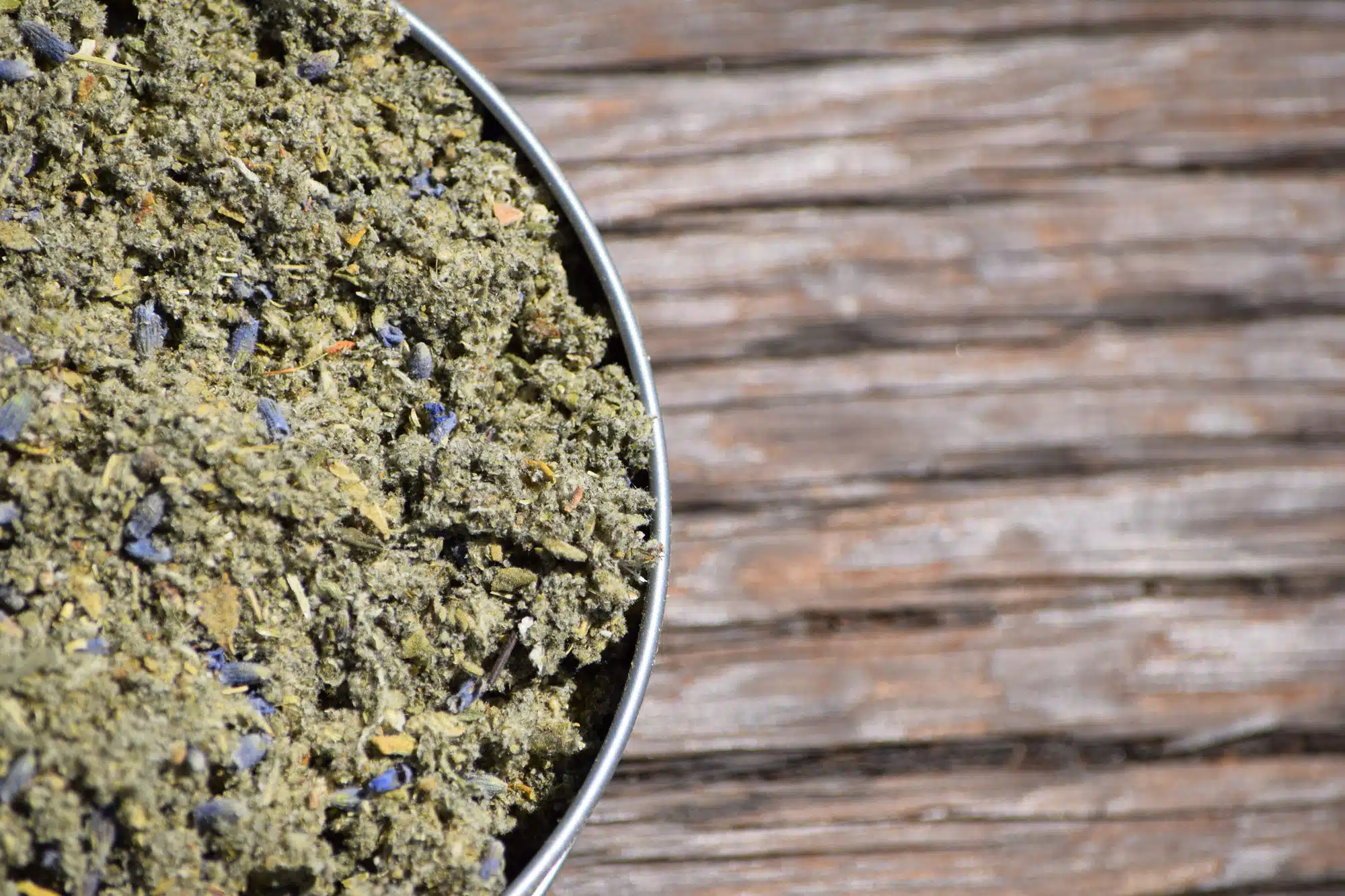Cannabis Science: How Terpenoids Affect Weed Sativas & Indicas
Cannabis Science: How Terpenoids Affect Weed Sativas & Indicas
Smell That Dank? What Cannabis Science Says About Sticky Icky Weed
Forget indica or sativa. Recent cannabis science research suggests terpenoids may be the reason certain strains of cannabis have a mellow or energized high.
Smell that dank — like a forest of Fruit Loops with a circus inside. And for that, you can thank terpenoids, chemical compounds that give cannabis its aroma and flavor. They’re derived from the same terpenes shared by hops that make your IPA dance like a drunk hipster all over your tongue.
Though the science is still fresh and sticky, cannabis science research suggests these terpenoids do far more than just make weed smell like a Christmas tree. Scientists now think they interact with cannabinoids in interesting and profound ways — make one strain of cannabis heady and energized, give another a mellow body buzz.
So forget indica or sativa. The traditional classifications of indica or sativa have been thrown right out the window — like they’re about to get pulled over in Texas. The secret sauce is actually in the THC/CBD ratio of a strain, and how those cannabinoids interact with terpenoids to bring about a mellow or brighter buzz.

A New Horizon the Science of Cannabinoids
Now that cannabis legalization has dawned on 11 states and 25% of the US population, scientists are testing and studying weed in unprecedented detail. And they’ve discovered that traditional classifications of indica or sativa strains really have no bearing on the amount of THC or CBD in a particular strain.
The THC/CBD radios can be all over the place — as can the effects of the weed. Certain sativa strains can have higher CBD than some indica strains; some indica strains have higher THC and lower CBD than some sativa. Whether a strain makes you drool or swoon has less to do with whether its indica or sativa — and more to do with its THC/CBD ratio and how those compounds interact with the specific terpenoids involved.
Much of a high’s difference is actually in the terpenes themselves. Strains that produce a stoned effect often associated with indicas have high concentrations of the terpene called Myrcene. Other terpenes include Caryophyllene, Terpinolene, Pinene and Limonene. In addition to flavor and smell, these terpenes cause various physical and mental effects, depending on how they interact with various cannabinoids like THC, CBD, THC-V, CBG, etc.
“While cannabinoid ratios in most cannabis may be about the same, it is the terpene content which typically creates the different qualities that we have parsed as the difference between indicas and sativas for some time,” says Dr. Jeffery Hergenrather, President of the Society of Cannabis Clinicians. “It is highly likely that terpenes may very well alter the properties of the cannabinoids. Standardized testing is essential to the advancement of our understanding of this issue.”
Indica & Sativa: a New Understanding of Cannabis Species
If you’re even an occasional toker, you’re probably aware of the indica or sativa subspecies classifications for cannabis — and it’s only recently turned out the differences don’t mean as much as we once thought.
The terms remain relevant as subspecies of cannabis. Indica plants grow broader leaves and are shorter in stature. They have a shorter flowering season and are easier to grow in cooler climates — which is why they tend to be more prevalent in winter. Indica yields also tend to be greater than sativa.
The leaves of a sativa plant are splindier and thinner, and the plants are taller — so they’re harder to grow indoors. Sativa plants are more indigenous to warmer climates with longer summers. How to pass a hair follicle drug test
And then of course you have hybrids — a mixture of the two.
But the next time you study a dispensary menu, pay less attention to the subspecies classification — focus instead on the THC/CBD dynamic and reported effects.

Keep on Toking: A Tradition of Herbal Heritage
Cannabis has been used by humans for thousands of years for recreation and remedy. Nearly 5,000 years ago, Chinese Emperor Shen-Nung recognized cannabis treatment for over 100 ailments including gout, rheumatism, and malaria. And he probably never heard of terpenoids either.
And while we are only beginning to understand cannabis science, we’re already well aware of the effects. Fortunately, you don’t need to know why an herb works to understand that it does indeed work. That’s the beauty of herbal medicine — it’s been passed down by the ancestors across millennia. We know what herbs do, even if we don’t always understand why they do it.
As the Bible (and that classic Cypress Hill cut) says in Genesis 1.29: “I give you every seed-bearing plant on the face of the whole earth and every tree that has fruit with seed in it. They will be yours for food.” Moses didn’t necessarily know why — but he knew what’s for dinner.
The Earth is a pharmacy cornucopia. Eat your greens and be happy.


Mathew Gallagher
Wordsmith Specialist
A freelance writer for hire, Matt Gallagher is the face and voice behind Web Copy Magician. He enjoys Bear Blend as a tea to spiritually reconnect with nature and the therapeutic wonders of chlorophyll.
2 Comments
Trackbacks/Pingbacks
- Happy 420 Earth Day: Get Stoned, Make Art, Save the Planet - […] do with Hitler’s birthday — though we’ll take any excuse to fumigate Nazi fuck boy energy in billows of…
- Look and Feel Fresh This Summer With CBD - […] Even if you’re vaping weed, it’s rare that it’s actual flower. Most of the time, it’s THC-infused swamp oil.…
- Make Smoking Cool Again: Free the Herb & Be Happy - […] Even if you’re vaping weed, it’s rare that it’s actual flower. Most of the time, it’s THC-infused swamp oil.…
Submit a Comment
Join the Bear Blend Tribe
Tribe members receive special discounts on products, invitations to premier events and are welcomed to contribute writings and videos to the community.

I knew with the first two paragraphs that this was written by you, Matt. Great job although it will not get me to try the stuff. Love you, Aunt Marcia
Awesome article. This gave a lot of good information. I have noticed that when the CBD ratio is higher it has taken away the pain instead of the strain type.
Very good information!